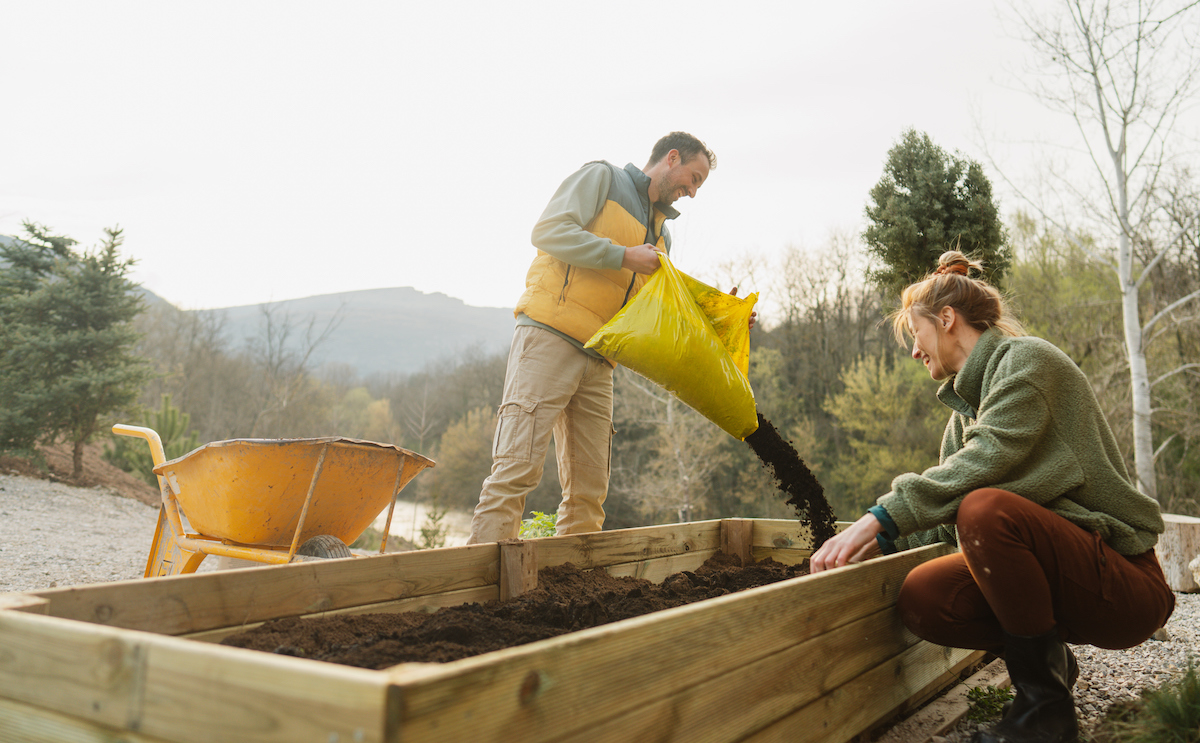

We may earn revenue from the products available on this page and participate in affiliate programs. Learn More ›
Making a raised garden bed can be a simple task that allows gardeners to make the most of their space, plant a garden just about anywhere, including yards unsuited for ground-level gardening, adjust the orientation of crops to best align with the sun, and access plants more easily. While available in prefabricated kits in many sizes and materials, building raised garden beds from wood is common.
After building a raised bed, it’s important to decide how to fill a raised garden bed. Several economical methods of filling raised garden beds will produce healthy crops.
How Much Soil Do You Need?
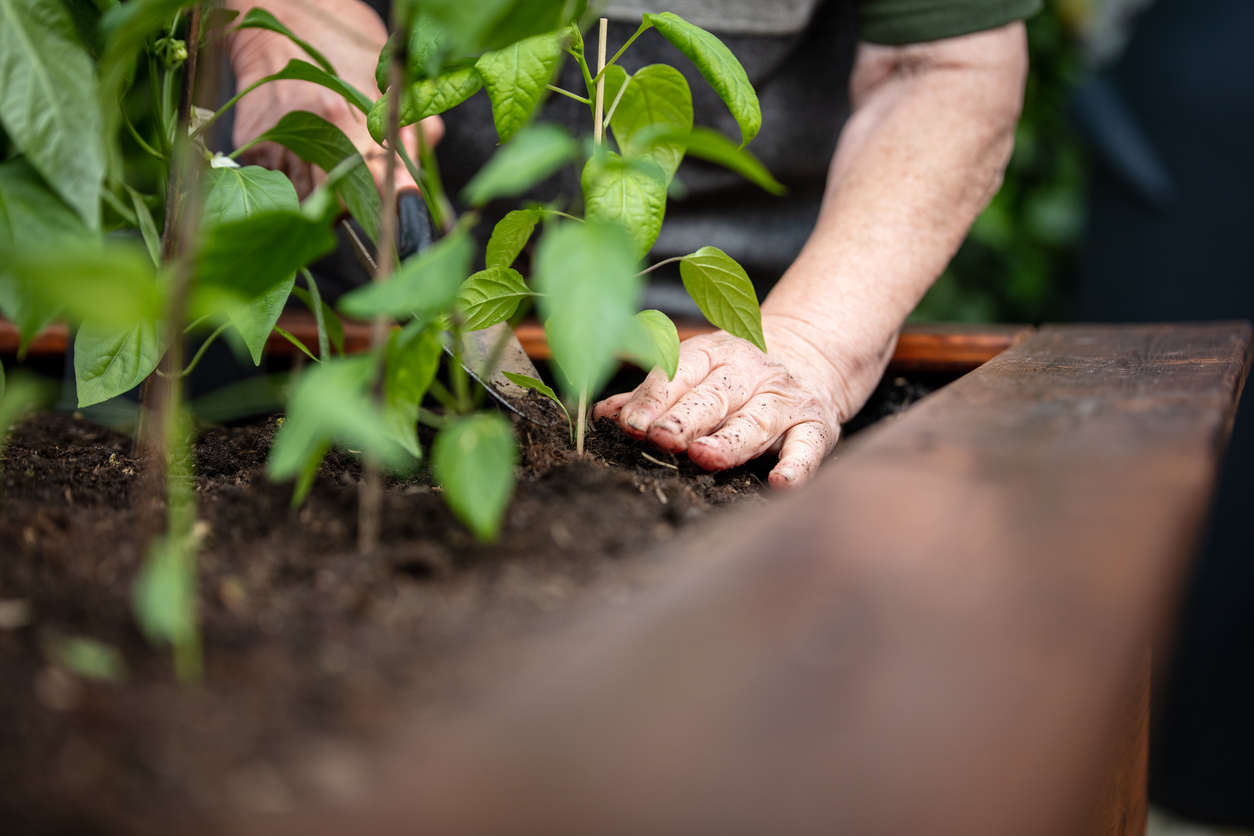
Typically, the soil level should be 1 to 2 inches below the edge of the raised bed. To calculate how much soil is needed to fill up the raised bed, multiply the length by the width by the height (minus 1 to 2 inches) of the container. This will provide the necessary number of cubic feet. To calculate the number of cubic yards (which is how soil is usually sold), divide by 27.
This method works best when using square or rectangular beds. Calculations for round, hexagonal, octagonal, or other shapes get more complicated but are based on the same premise of length times width times height.
These calculations are based on the use of raised bed soil. Calculations will change if you’re using other material in the bed, such as sand, rocks, or wood, which consume varying amounts of volume.
How to Fill a Raised Garden Bed: The Best Method
After building raised beds for gardening, it’s time to fill those beds with soil to nourish the plants that will soon grow. Probably the most popular—or at least, the most familiar—method is known as the “lasagna” style. As with the Italian dish, lasagna gardening is all about layers.
Before You Begin
Also known as sheet mulching, the lasagna method of filling raised beds is a cost-effective, simple, no-dig way of gardening that creates fertile, nutrient-rich soil. There are no hard and fast rules about which materials to include, as long as they are organic. Prepare beds in the fall to allow materials time to begin decomposing.
STEP 1: Use cardboard to cover grass and weeds.
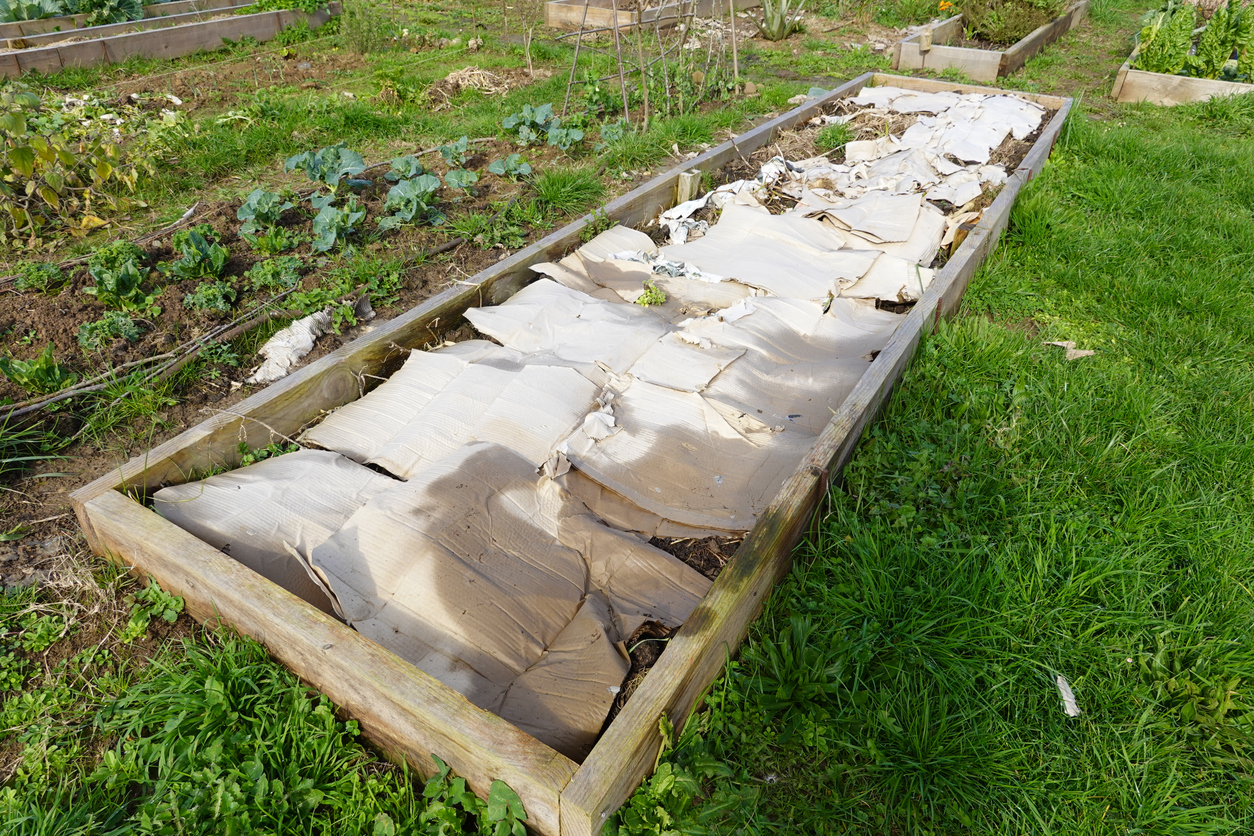
Lay a single layer of cardboard or several layers of newspaper. This first layer will cover grass and prevent weeds, but it also serves as the first “brown” layer, adding carbon.
Water to hold the cardboard in place and to accelerate decomposition. Moistening this layer will also attract earthworms, which will loosen soil and add castings, a rich fertilizer.
STEP 2: Add drainage if your soil is poor.
Some gardeners add broken terra-cotta, gravel, and sand to ensure drainage and eliminate excess water, particularly in heavy, clay soil.
Other gardeners advise against adding these items, claiming it creates a “perched water table” at the bottom of the bed that will hold water instead of dispersing it. This is more likely to occur when different types of soil are layered.
STEP 3: Add a green layer of organic materials.
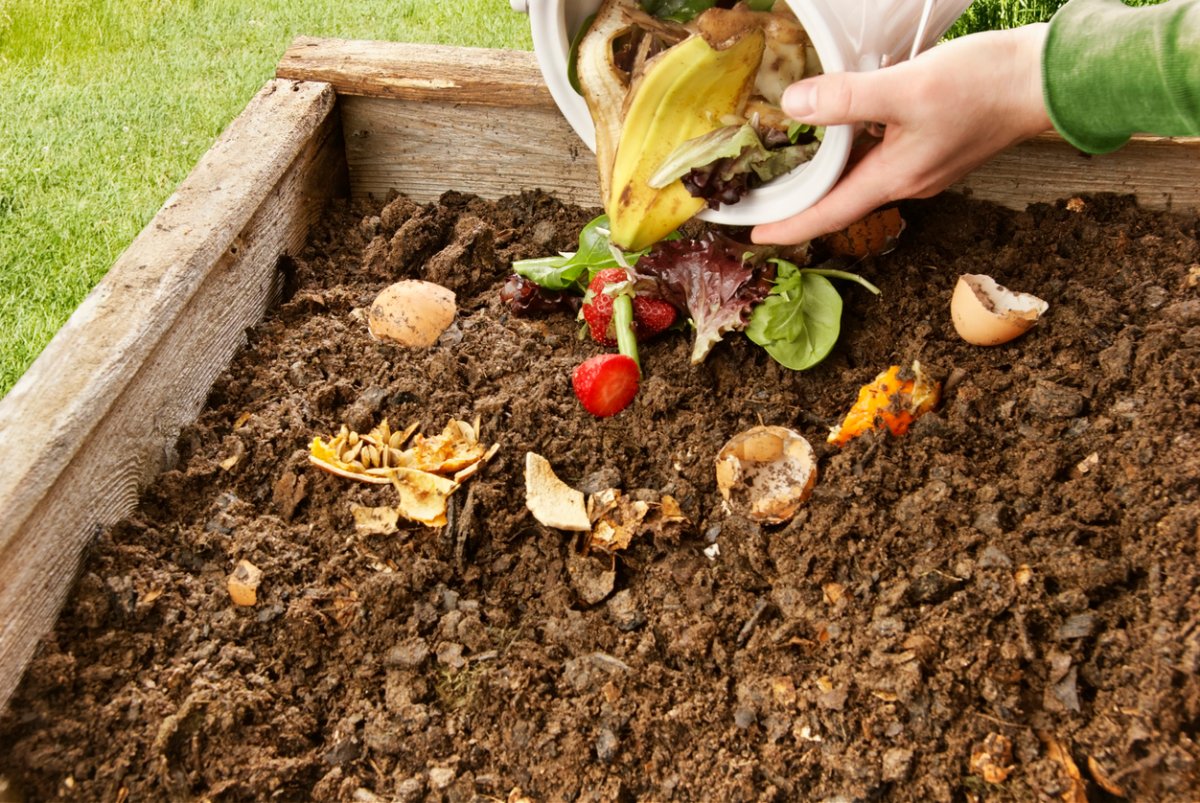
The next layer should be 2 to 3 inches deep, green, and organic. It can include materials such as twigs, green leaves, grass clippings, straw, kitchen scraps from fruits and vegetables, aged manure, or other organic materials. Whatever materials are used should have moisture, as opposed to dry brown materials. This layer will provide nitrogen.
STEP 4: Follow with a brown layer.

Add a layer of brown materials, such as shredded dry leaves, pine needles, peat, or shredded newspaper. This layer should be 4 to 6 inches deep, or twice as deep as the green layer. This carbon layer will accelerate decomposition; however, it will take nitrogen from the soil during the process, so it’s important to add that back in with the previous green layer.
STEP 5: Top it with a layer of soil, compost, or a mixture.

One winter period may be insufficient for the layers of raised bed to thoroughly break down and become a rich soil. In this case, you may have to add a top layer of soil so you can plant your spring crops or landscape plants. Combine topsoil and compost in a 50/50 mixture. Other successful combinations include equal parts topsoil, compost, and peat, or use a specific raised garden bed soil.
4 Alternative Methods for Filling Raised Garden Beds
There are several options for creating raised bed gardens. Other styles of filling a raised garden bed may be more conducive to different environments or time commitments.
Hugelkultur
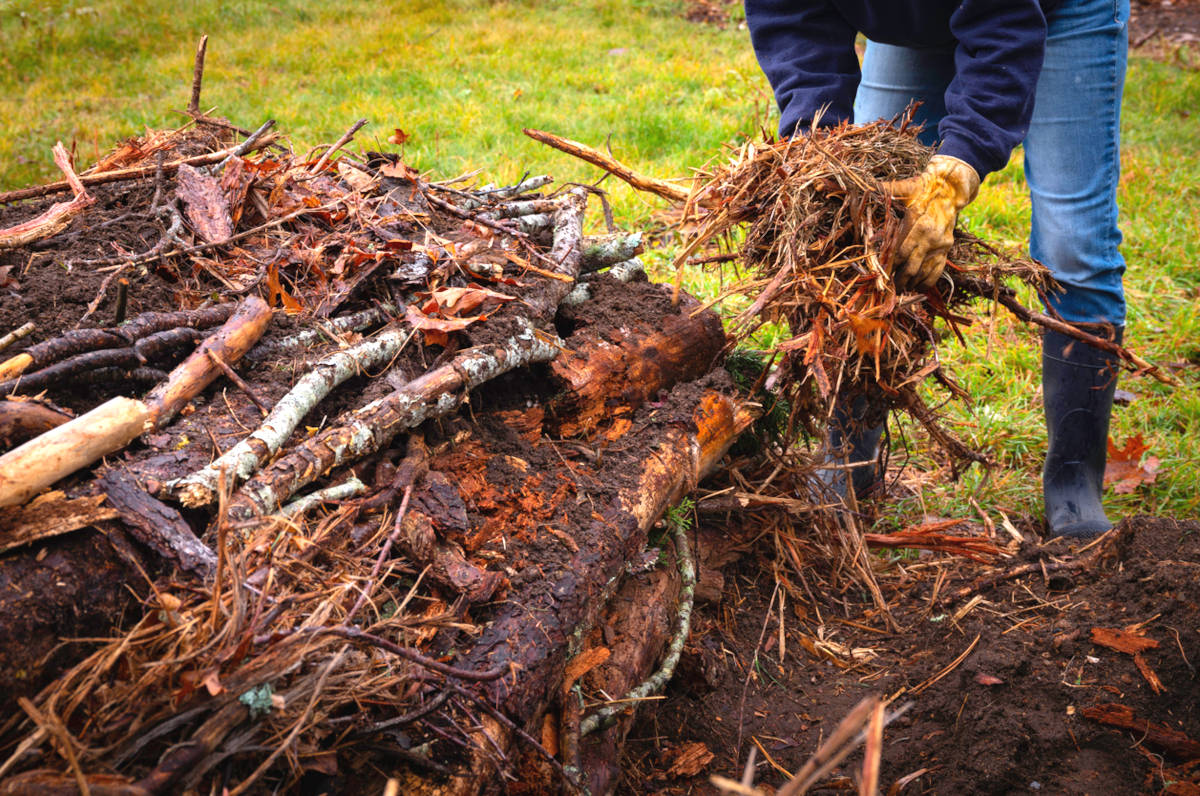
This old-world German approach uses logs, branches, and plant debris to form the base of a 3- to 5-foot-tall sloped “hill mound,” providing easy access for planting and harvesting. Nutrients and moisture trapped in the decaying material fertilize the soil, creating a microclimate as it decomposes, which keeps crops warm late in the season. They require less watering, provide more gardening surface in a small space, add organic matter, and divert waste from burn piles.
Core Gardening
With core gardening, a sponge-like trench in the middle of the bed both holds and wicks water, reducing the amount of irrigation needed. It also reduces the number of weeds. Dig a 10-inch-deep trench down the center of your bed. Lay cardboard in the bottom of the trench, and then top the cardboard with straw, leaves, grass clippings, or twigs. Fill the trench with a mixture of soil and compost. Thoroughly water this central trench; it will retain water and slowly release it to the rest of the bed.
Ruth Stout
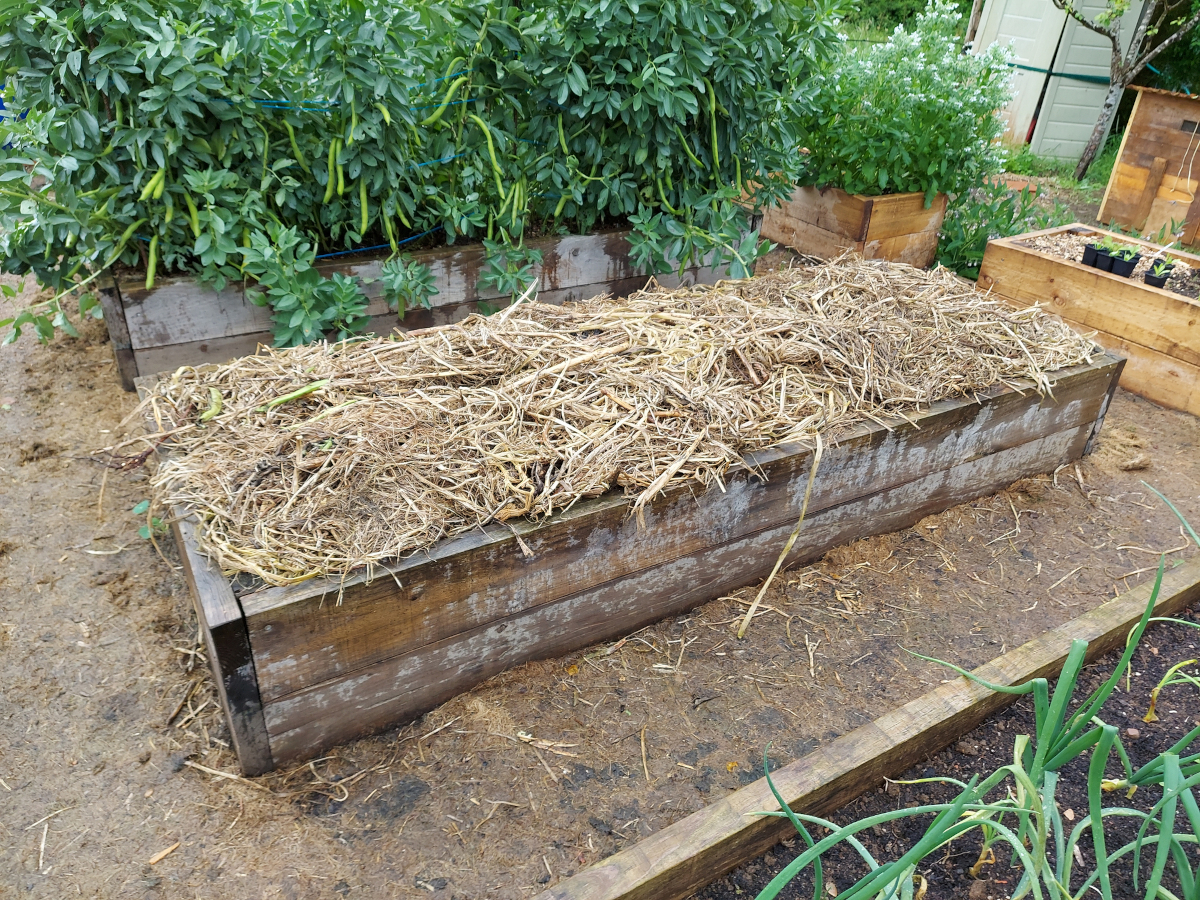
With the Ruth Stout method, all exposed soil is covered with organic mulch that adds nutrients as it decomposes, while also reducing erosion and suppressing weeds. The first layer is straw or other material that breaks down quickly (grass clippings, leaves). Then, compost or manure is layered on, followed by more straw on top, to a depth of 8 to 12 inches. Plants are grown directly in the mulch.
Back-to-Eden
Back-to-Eden gardening incorporates a mulch of wood chips with composted chicken manure as a 4- to 6-inch base layer. Added on top of that is a raised bed soil mix containing a 50/50 ratio of compost or manure mixed with topsoil. Another thin layer of chicken manure and compost spread on top adds more nutrients. The wood chips decompose over time, improving soil health. Worms can be added to increase the number of nutrients in the soil.
Materials to Keep Out of a Raised Garden Bed
While a mixture of materials that add nutrients to the soil as they decompose is beneficial in raised beds, not every type of material should be added. Lindsey Chastain, founder and CEO of The Waddle and Cluck, a website dedicated to homesteading, says, “Some items that should not be included in your raised beds [include]:”
- Treated lumber. Preservatives such as arsenic can leach into the soil. While uptake by plants seldom presents a problem for human consumption, limiting arsenic exposure is a good idea.
- Previously used soil with grass, weeds, pest-infested materials, or diseased plants. They can introduce fungus or other diseases.
- Organic waste with weed seeds. Unless temperatures in the bed get hot enough to “cook” them, they will probably germinate and grow in the bed.
- Waste from carnivores that can spread pathogens.
- Dairy, meat, and oil that can attract wildlife, insects, and other pests.
